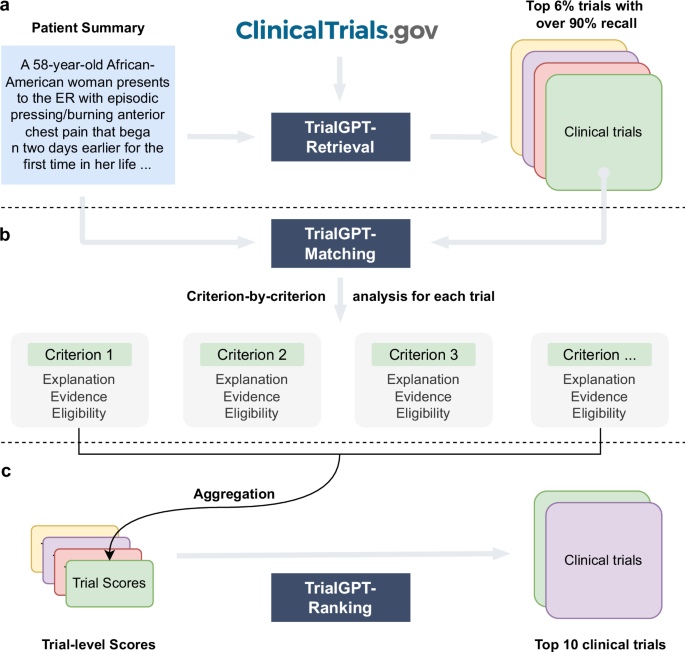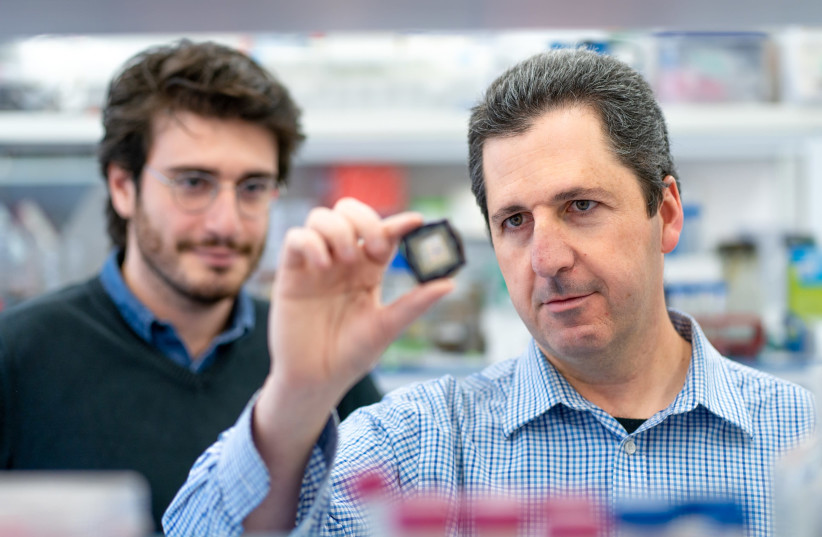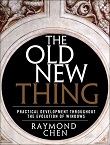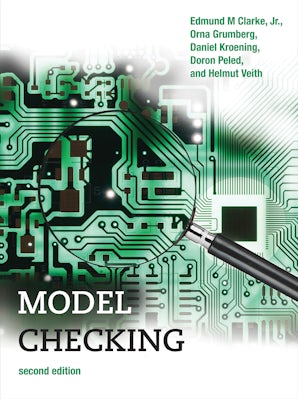
Matching patients to clinical trials with large language models
Nature Communications volume 15, Article number: 9074 (2024 ) Cite this article
Patient recruitment is challenging for clinical trials. We introduce TrialGPT, an end-to-end framework for zero-shot patient-to-trial matching with large language models. TrialGPT comprises three modules: it first performs large-scale filtering to retrieve candidate trials (TrialGPT-Retrieval); then predicts criterion-level patient eligibility (TrialGPT-Matching); and finally generates trial-level scores (TrialGPT-Ranking). We evaluate TrialGPT on three cohorts of 183 synthetic patients with over 75,000 trial annotations. TrialGPT-Retrieval can recall over 90% of relevant trials using less than 6% of the initial collection. Manual evaluations on 1015 patient-criterion pairs show that TrialGPT-Matching achieves an accuracy of 87.3% with faithful explanations, close to the expert performance. The TrialGPT-Ranking scores are highly correlated with human judgments and outperform the best-competing models by 43.8% in ranking and excluding trials. Furthermore, our user study reveals that TrialGPT can reduce the screening time by 42.6% in patient recruitment. Overall, these results have demonstrated promising opportunities for patient-to-trial matching with TrialGPT.
Clinical trials examine the effectiveness of medical interventions and provide crucial evidence that can be used to guide clinical practice. They also offer an opportunity for participants to receive experimental treatments that could potentially improve their health outcomes. However, matching patients to suitable clinical trials can be a challenging process1,2,3. This process includes analyzing a patient’s medical history, understanding the eligibility criteria of each clinical trial, and ensuring a match that satisfies both patient needs and trial requirements. As such, manually matching patients and clinical trials is often labor-intensive, time-consuming, and prone to human errors.














/cdn.vox-cdn.com/uploads/chorus_asset/file/25742958/Flyover___Dark_Mode_Heatmap.jpg)





